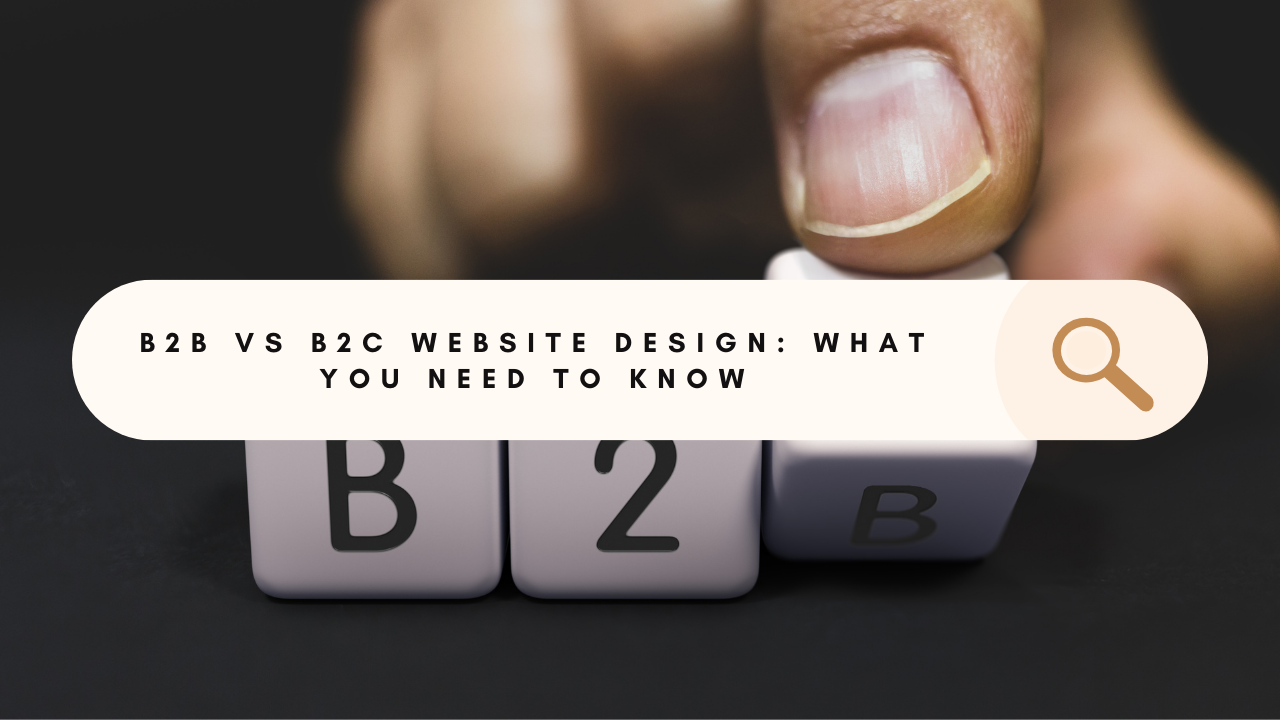Introduction:
In the digital era, where online presence plays a pivotal role in business success, understanding the disparities between B2B and B2C website design strategies is crucial for maximizing effectiveness and achieving desired outcomes. While both aim to engage audiences and drive conversions, the approaches differ significantly due to the distinct nature of their target markets and purchasing behaviours. Let’s delve deep into the nuances of B2B and B2C website design strategies to uncover the key differentiators and best practices.
Distinguishing B2B and B2C Website Design Strategies:
Target Audience and User Intent:
B2B Website Design:
- Target Audience: B2B websites primarily target businesses, organizations, or professionals seeking products or services to support their operations or growth.
- User Intent: Visitors to B2B websites are typically motivated by factors such as efficiency, functionality, and return on investment (ROI). They are often looking for solutions to specific business challenges or opportunities.
B2C Website Design:
- Target Audience: B2C websites cater directly to individual consumers or end-users who are seeking products or services for personal use or enjoyment.
- User Intent: Consumers visiting B2C websites are driven by factors such as convenience, affordability, and emotional appeal. They may be seeking products to fulfill immediate needs or desires.
Content and Messaging:
B2B Website Design:
- Content Focus: B2B websites tend to feature detailed product descriptions, case studies, whitepapers, and industry insights aimed at educating and informing potential buyers.
- Messaging Tone: The tone of B2B website messaging is often professional, authoritative, and focused on demonstrating expertise and credibility.
B2C Website Design:
- Content Focus: B2C websites prioritize visually appealing product imagery, customer testimonials, reviews, and promotional offers designed to capture attention and stimulate purchase decisions.
- Messaging Tone: B2C website messaging is typically more casual, conversational, and emotionally driven, aiming to establish a connection with consumers and evoke positive feelings.
Design and User Experience:
B2B Website Design:
- Design Elements: B2B websites often feature clean, minimalist designs with a focus on functionality and usability. Emphasis is placed on clear navigation, intuitive user interfaces, and easy access to essential information.
- User Experience: B2B website users expect efficient browsing experiences that enable them to quickly find relevant products or services, access resources, and make informed decisions.
B2C Website Design:
- Design Elements: B2C websites may incorporate more visually engaging elements such as vibrant colors, dynamic animations, and interactive features to capture attention and create memorable experiences.
- User Experience: B2C website users seek seamless and enjoyable browsing experiences that facilitate product discovery, comparison, and purchase. Features like personalized recommendations, user-generated content, and social sharing options enhance engagement and satisfaction.
Conversion Strategy:
B2B Website Design:
- Conversion Focus: B2B websites prioritize lead generation and nurturing, focusing on capturing contact information through forms, gated content, and calls-to-action (CTAs). The emphasis is on building relationships and guiding prospects through the sales funnel.
B2C Website Design:
- Conversion Focus: B2C websites aim to drive direct sales and transactions, with a focus on optimizing product pages, checkout processes, and payment options to streamline the purchase journey. The goal is to encourage impulse buying and maximize conversion rates.
SEO and Digital Marketing:
B2B Website Design:
- SEO Strategy: B2B websites often prioritize content marketing, keyword optimization, and link building strategies to improve search engine visibility and attract qualified leads.
- Digital Marketing Channels: B2B businesses may leverage email marketing, social media advertising, and industry-specific platforms to reach decision-makers and influencers within target organizations.
B2C Website Design:
- SEO Strategy: B2C websites focus on optimizing product listings, category pages, and local search presence to enhance visibility and drive organic traffic from search engines.
- Digital Marketing Channels: B2C companies may invest in paid search advertising, social media campaigns, influencer partnerships, and affiliate marketing to reach and engage with consumers across various channels.
Trends and Statistics:
- According to Statista, global B2B e-commerce sales are projected to reach $8 trillion by 2027, highlighting the growing importance of B2B websites.
- A survey by Adobe found that 38% of people will stop engaging with a website if the content or layout is unattractive, emphasizing the significance of visual appeal in B2C website design.
- Mobile commerce sales are expected to account for 54% of total e-commerce sales by 2021, underscoring the importance of mobile optimization in B2C website design (Statista).
Conclusion:
In conclusion, while both B2B and B2C website design strategies share common goals of engaging audiences and driving conversions, their approaches differ significantly based on target audience and objectives. By understanding the nuances of B2B and B2C website design, businesses can tailor their online presence to effectively connect with their respective audiences, enhance user experience, and achieve sustained growth in the competitive digital landscape.






















